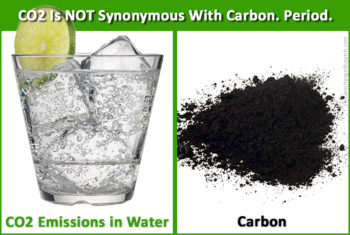 Queensland’s Great Barrier Reef (pictured) is once again the excuse for extending Green control of all land and waters.
Queensland’s Great Barrier Reef (pictured) is once again the excuse for extending Green control of all land and waters.
The current scare concerns the quality of water draining into the Coral Sea.
The Greens’ hidden agenda is to eliminate coastal agriculture, mining, and commercial fishing.
They would surrender the land to kangaroos, cassowaries, lantana, cane toads, wild cats, and feral pigs and the seas to marauding sharks, cruising whales, and aboriginal fishermen.
Reef Warriors will never be satisfied until pure water drains from farms, mines, ports, and rivers along the Queensland coast. This is an impossible and misguided dream. Pure water is sterile, and nothing flourishes in it.
Vibrant offshore life needs wind, rivers, and creeks to deliver minerals and nutrients into coastal waters.
Corals, shellfish, and marine plants need calcium, magnesium, potassium, phosphorus, nitrogen, sulfur, carbon dioxide, and trace elements to build their skeletons, shells, and plant tissues.
Australian soils are leached and deficient in many minerals. Farmers know that farm crops and domestic animals need mineral fertilizers for healthy growth. So do potted plants, orchards, and gardens, and so does all ocean life.
Many of these minerals are supplied naturally by the erosion of rocks such as limestone, magnesite, rock phosphate, dolomite, basalt, and granite.
This is a slow process, but mining, crushing, or calcining these rocks can speed things up, providing natural mineral fertilizer for farms, and any dust and river runoff provides free fertilizer for offshore marine life.
Seaweed and other marine plants need fertile muds delivered by flooding rivers, and all marine animals welcome bits of dead animal life.
All-natural fertilizers used for land plants will also benefit sea plants. Dust and smoke from bushfires, volcanoes, smelters, and power stations can deliver natural nutrients such as oxides of nitrogen, sulfur, and carbon (all essential for vigorous, healthy vegetation) to soils and plants in surrounding areas.
There is no danger as long as exhaust stacks or volcanic cones are high enough or remote enough to dilute these gases before they reach the ground.
The atmosphere and surface waters are efficient distributors of dilute aerial fertilizers to land and sea plants.
This is far safer and cheaper than manufacturing artificial fertilizers and animal supplements and then selling these products to farmers who sometimes over-apply.
The main run-off dangers to coastal waters are herbicide and pesticide residue and soluble artificial chemical fertilizers used in excessive quantities. This is real pollution, and it must be controlled.
Farmers have an incentive to control it — every bit that runs off is money wasted in purchase and application. Governments should stop employing green activists.
We must restore a real department of agriculture employing experienced agronomists dedicated to helping farmers, not looking for ways to put them out of business.
One of the safest and most complete sources of trace nutrients for land and sea plants is coal — decomposed coal, coal dust, or emissions from coal combustion.
Why so good? Because almost every element in coal came from plants and is needed by plants. In the coalfields, the outcrops of weathered coal seams can often be seen on aerial photos as bands of better soil and thicker, healthier scrub.

Barrier Reef Water Warriors need a dose of reality and perspective. Since the construction of the Burdekin Falls Dam, the mighty Burdekin River delivers far less in sediment and nutrients into the Coral Sea.
We can assist nature to restore some of this loss with aerial or aqueous mineral nutrients from mining and agricultural sources.
Coal mining and combustion provide many nutrients that benefit all plant and animal life. None is toxic unless artificially concentrated.
Viv Forbes has a lifetime of knowledge and experience in farming, pasture, and water management and the geology and chemistry of minerals, soils, and coal.

















Wind and Solar Energy are not Enviromentaly Friendly
I saw real pollution in the making on Australian farmland yesterday.
Thousands of solar energy panels were being installed. Typical constituents of such panels include cadmium telluride, copper indium selenide, cadmium gallium (di)selenide, copper indium gallium (di)selenide, hexafluoroethane, lead, and polyvinyl fluoride, as well as silicon tetrachloride as a byproduct.
Lets see how long those Eco-Freaks would last if they got stranded in the Outback without their Cell Phone/GPS and without the M.S. Media around